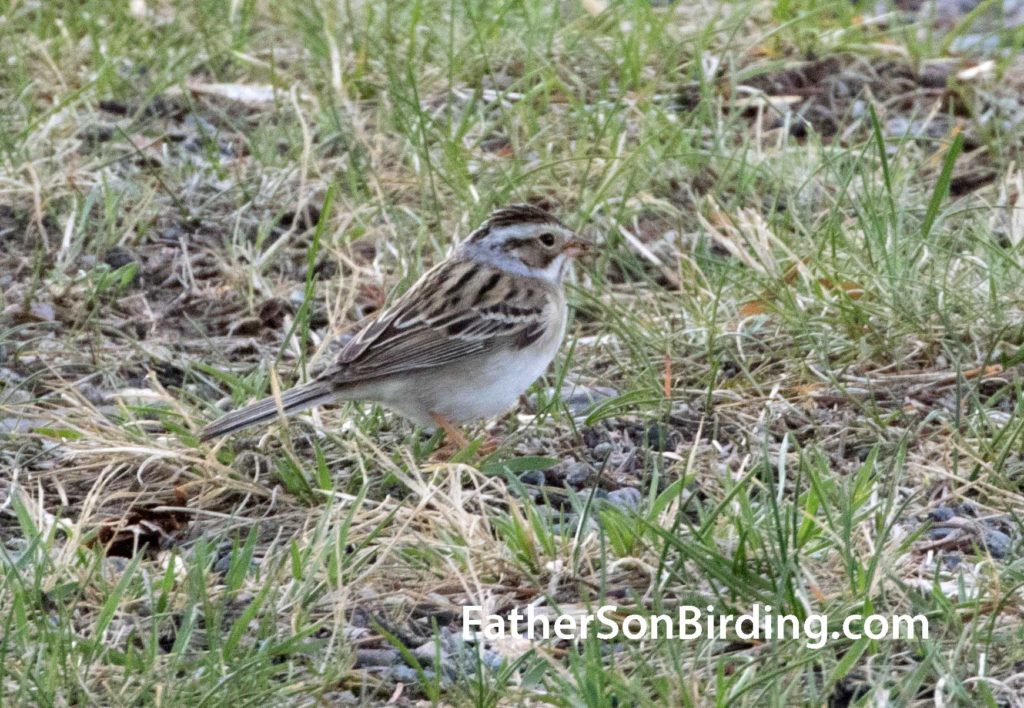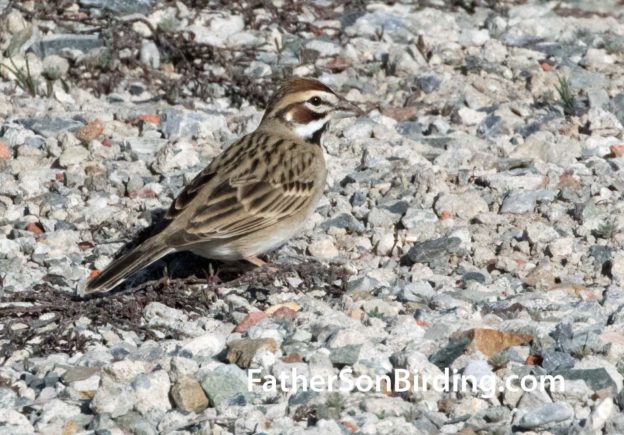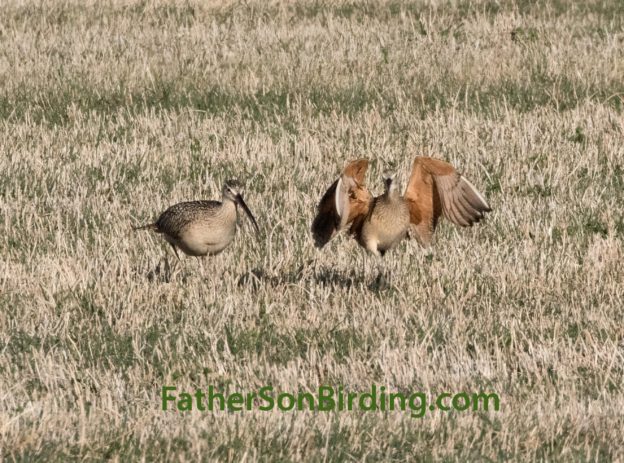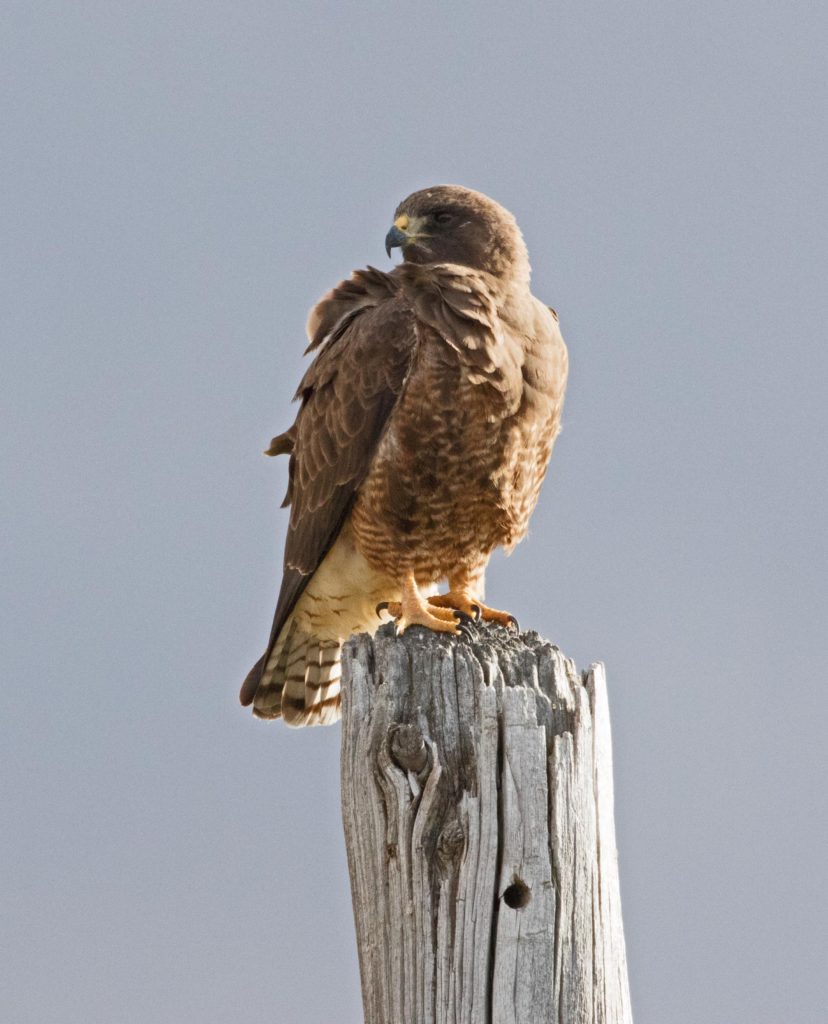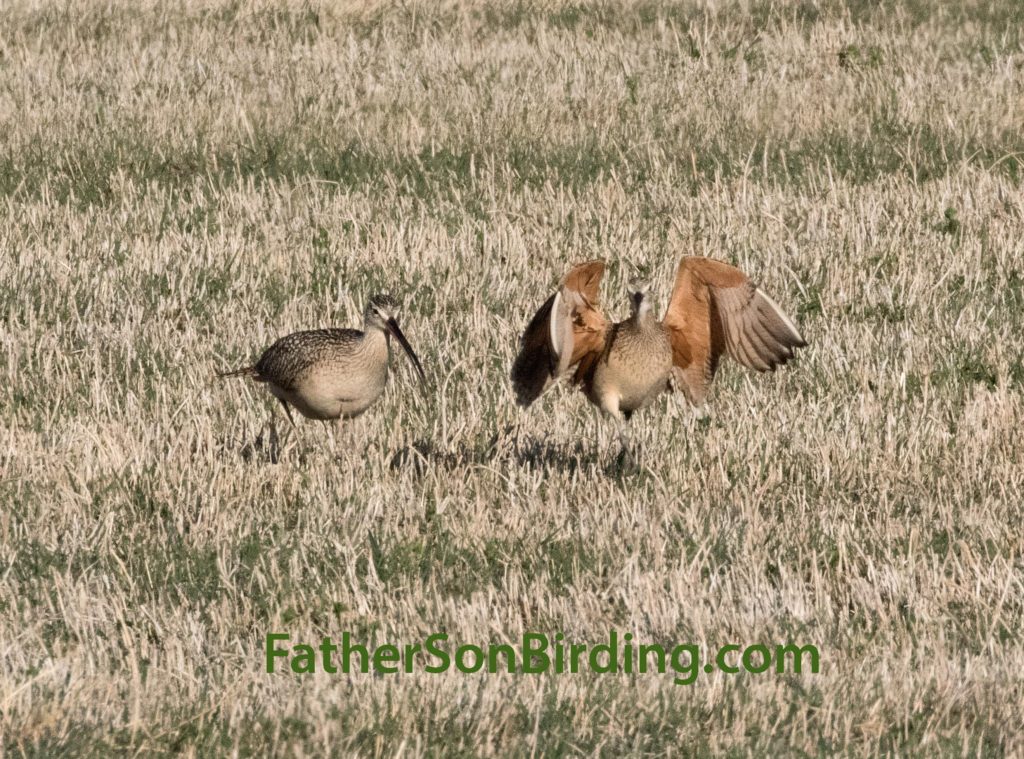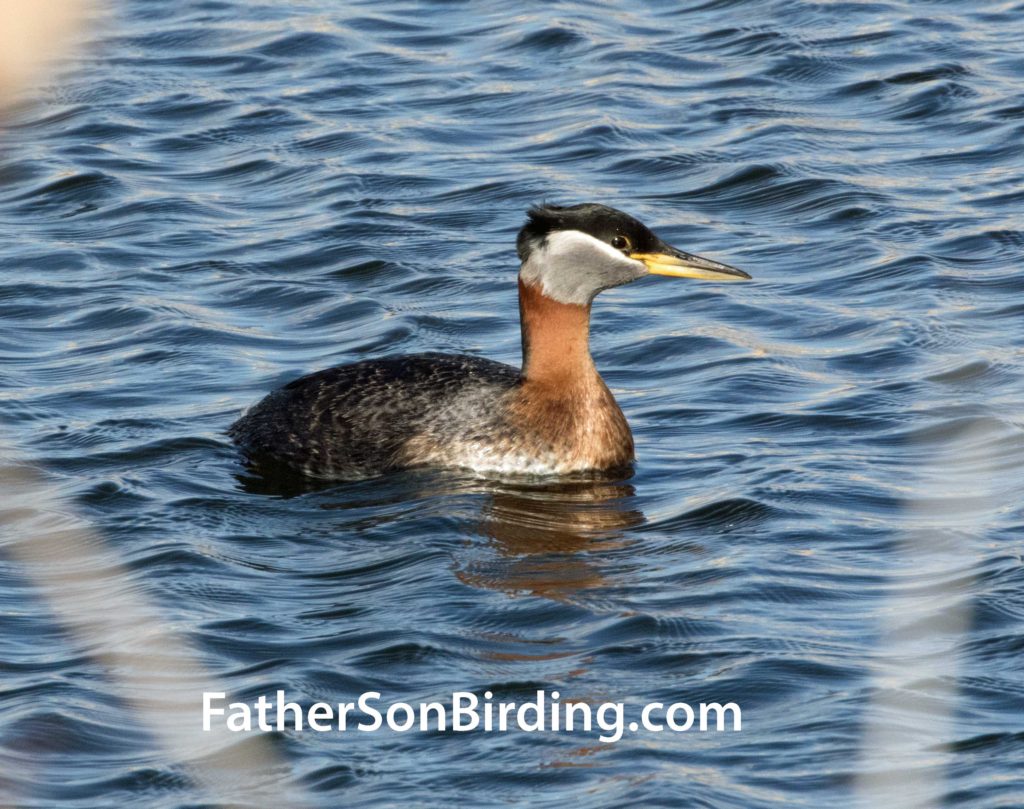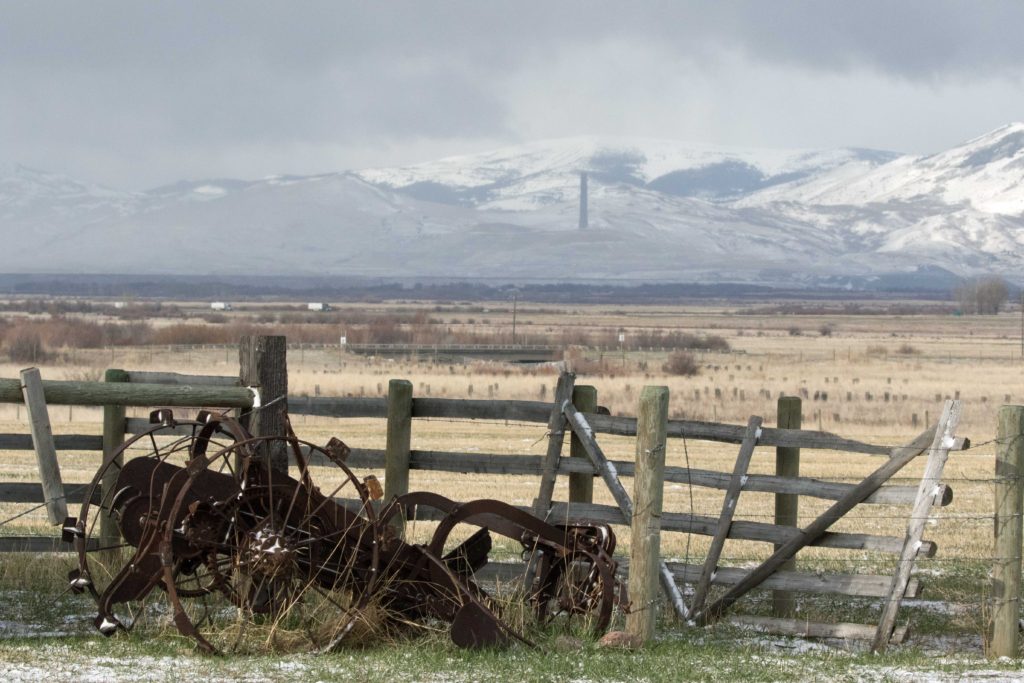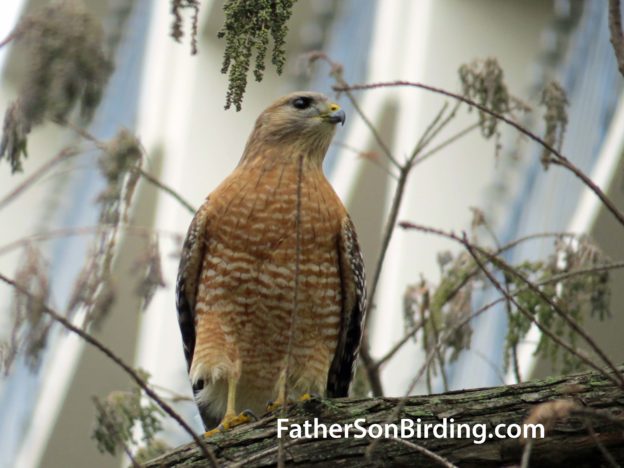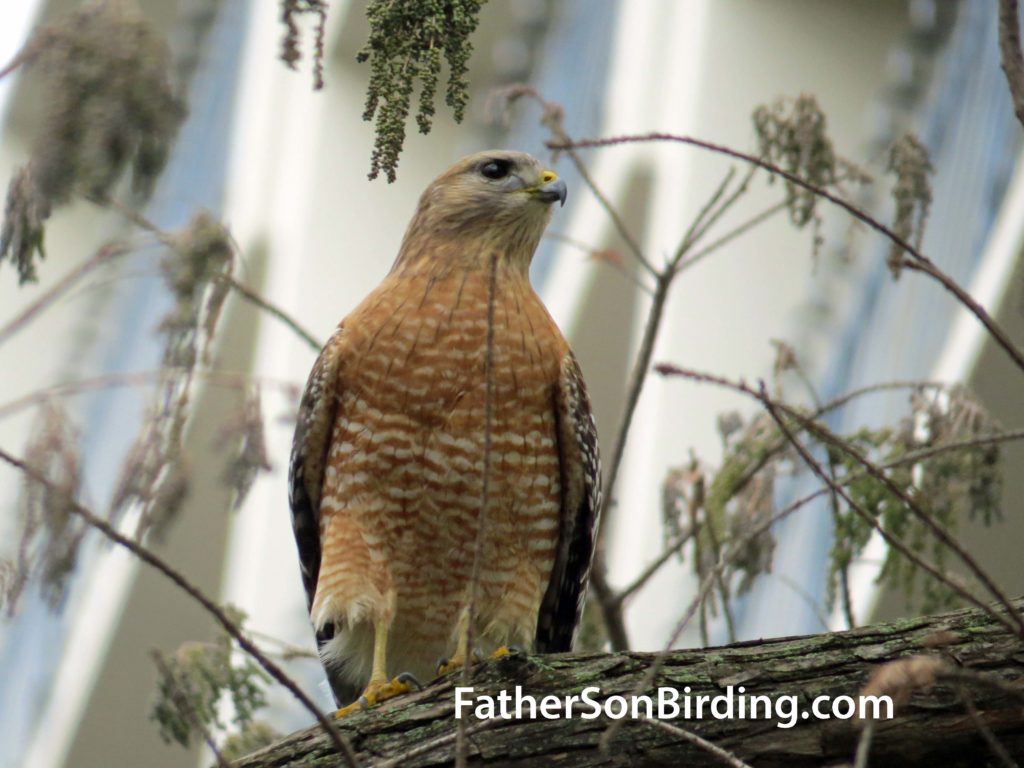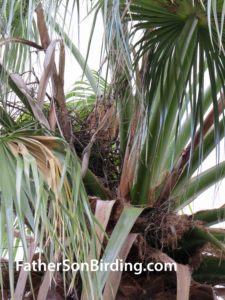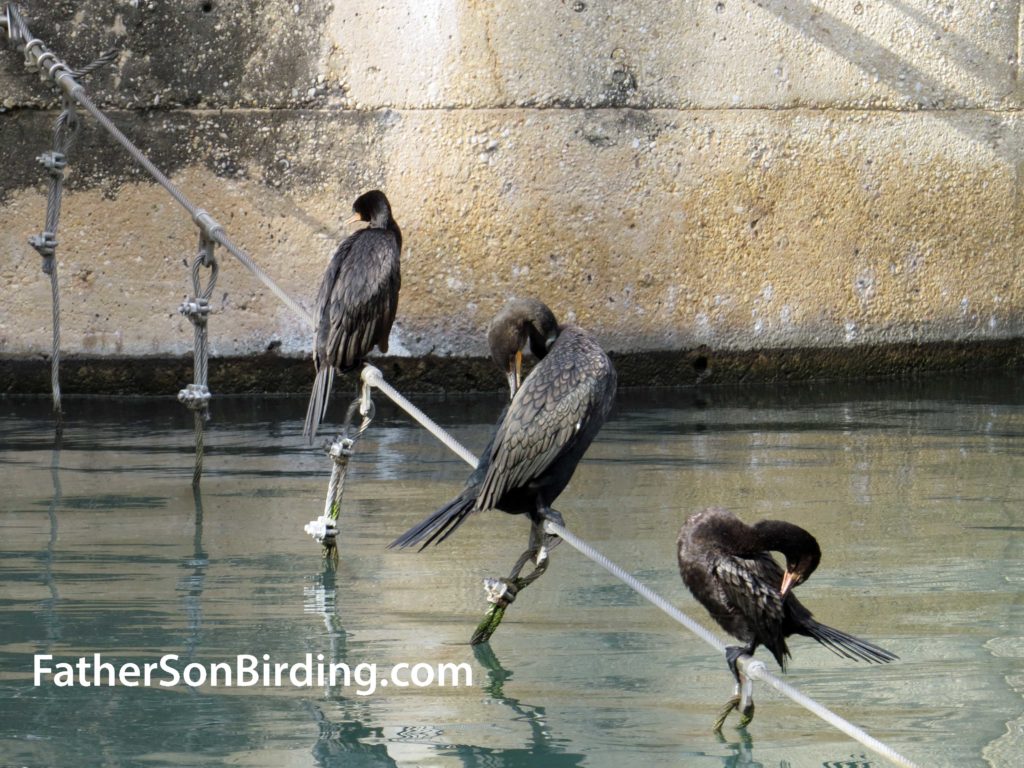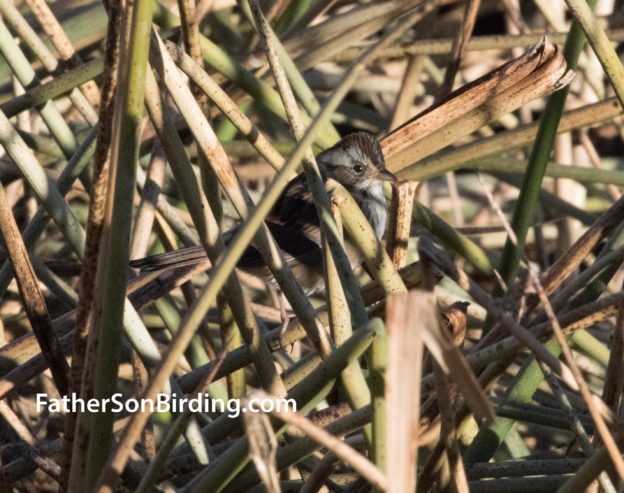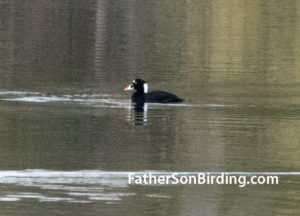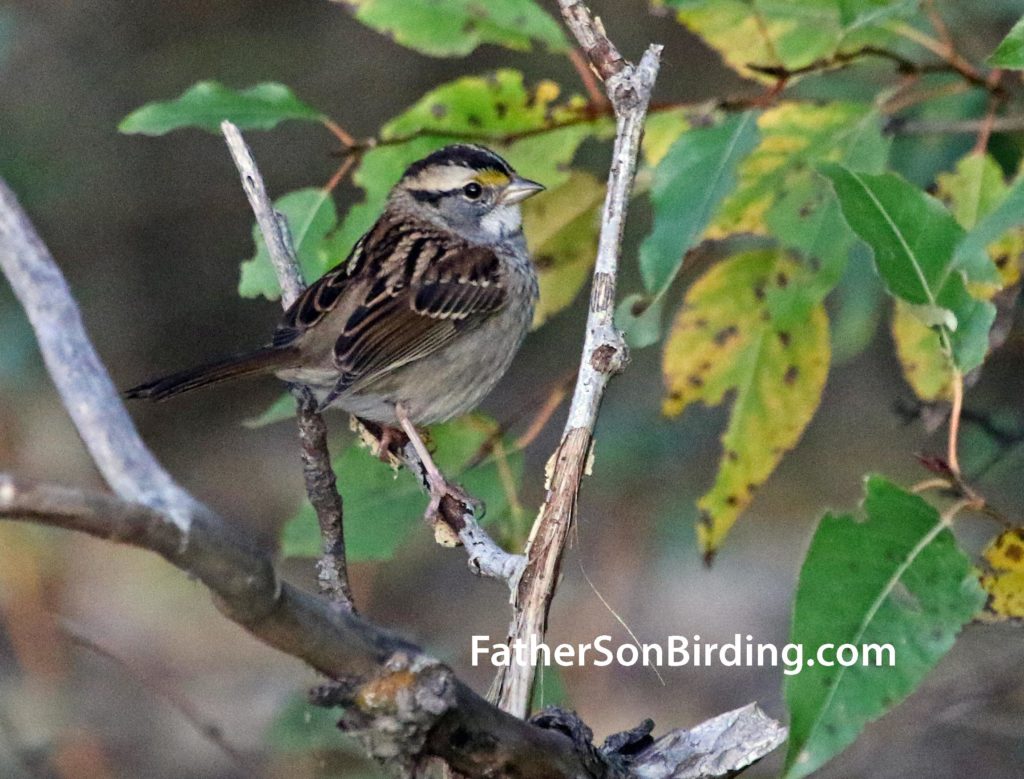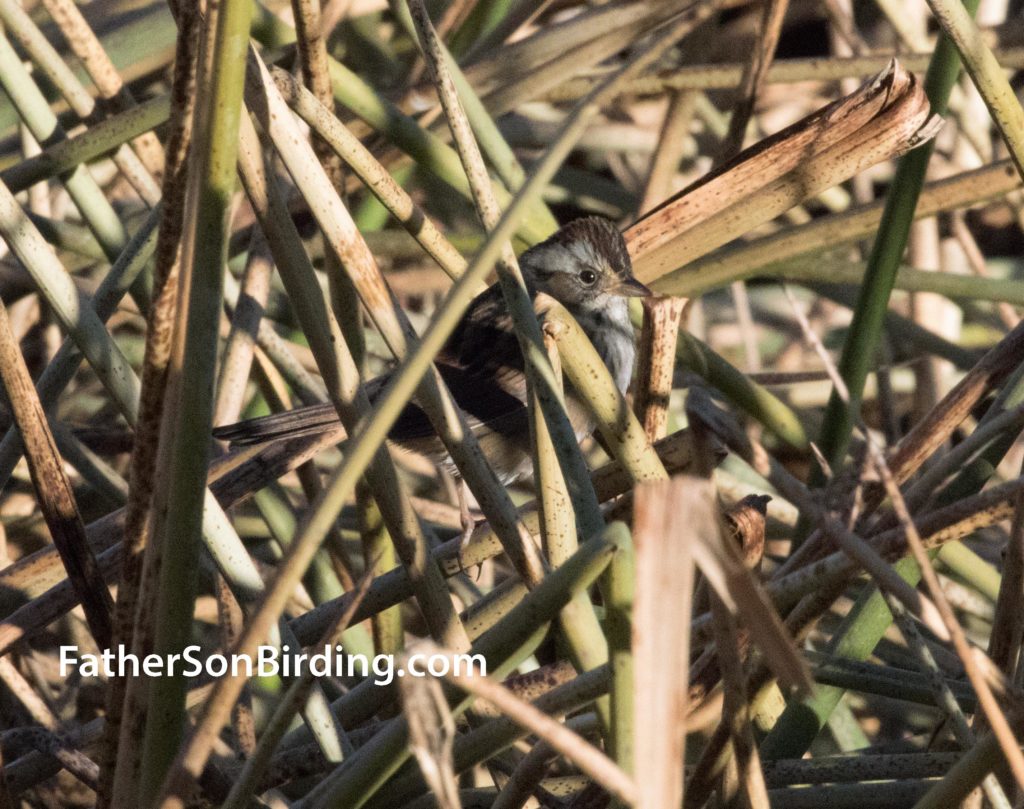Sparrows. A simple word that can elicit groans from the most experienced birder. Even after six years of dedicated birding, I feel like I am just beginning to grasp most sparrow identification, let alone sparrow behavior and song. With Braden’s help, I can now figure out most of Western Montana’s species, but put me in any new environment and I’m like a birding babe with a binkie.
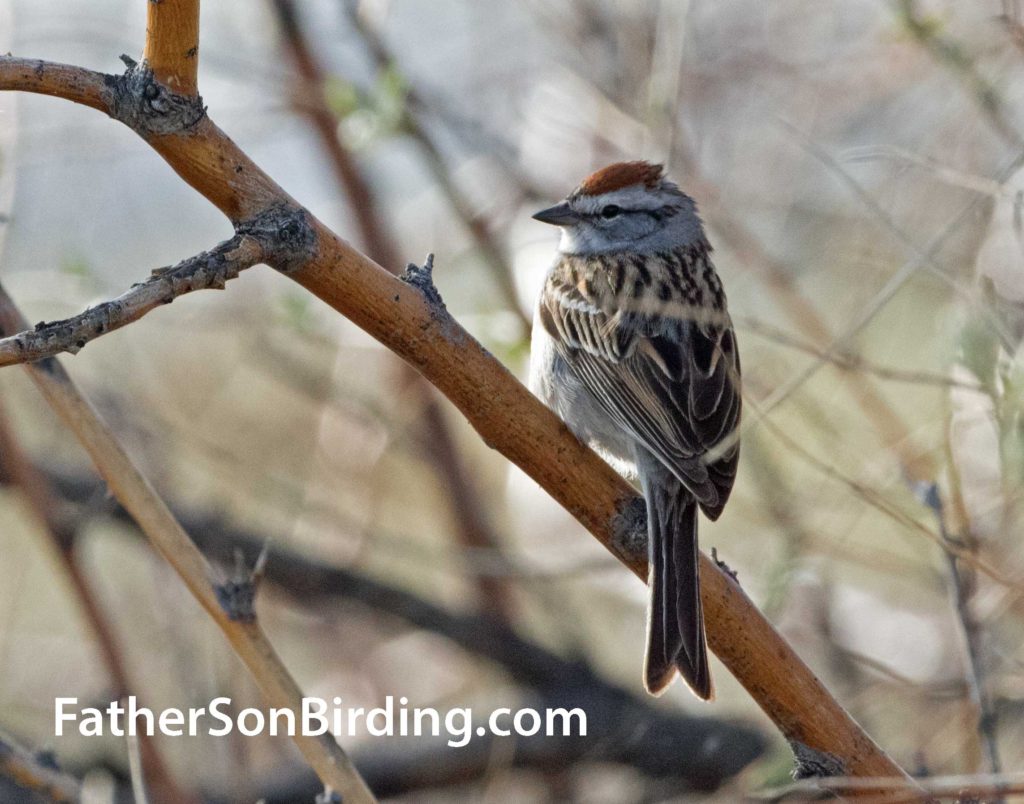
Earlier this week, I had the pleasure of speaking at the Helena public library, followed by a lively Last Chance Audubon meeting nearby. The next morning, I decided to sneak in some birding before heading back to Missoula. I first chose a local site affectionately called the “K-mart Wetlands.” This was my first time at the ponds during spring migration, and my pulse raced as I heard the haunting call of a Sora from the cattails. That was followed by my FOY (First of Year) Common Yellowthroat and a flock of more than twenty Yellow-rumped Warblers.
I was fortunate to run into a Helena birder name Jeffrey Olsson who said, “I heard a Clay-colored Sparrow down at the end there.” Though Braden had done his best to educate me about this bird, I drew a mental blank. “What does it sound like?” I asked Jeff. He repeated a buzzy sound for me. “Great. Thanks,” I said and headed off down a fenceline in pursuit. Amazingly, I heard the distinctive call, but didn’t catch sight of the bird.
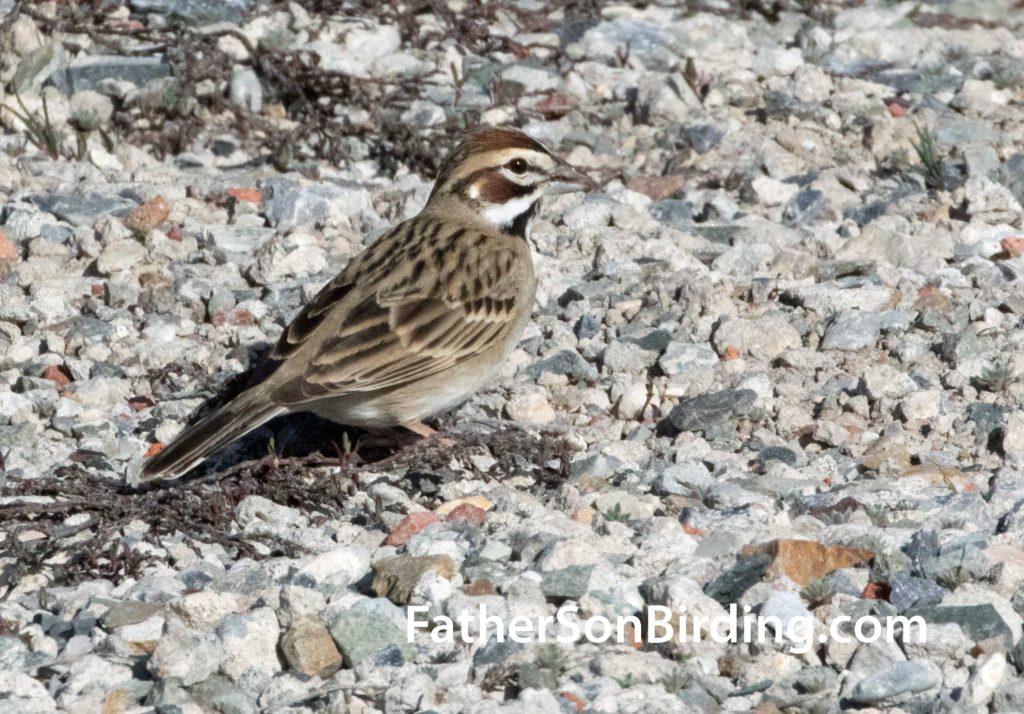
I did run into a large number of Chipping Sparrows along with a single White-crowned. After completing a loop of the end pond, I looked out into a gravel patch and spotted a lone bird foraging for seeds. “Clay-colored?” I asked myself, quickly raising my camera. It wasn’t. Instead, it was something just as exciting—a lone Lark Sparrow. After seeing one with Braden and Nick Ramsey only a couple of weeks earlier, the Lark got my pulse racing, especially after I managed some good photos. Alas, I still didn’t glimpse a Clay-colored—or so I thought.
While taking photos of the Chipping Sparrows, I noticed some with duller brown head stripes instead of the usual bright red. I assumed these duller sparrows were females, but they also seemed suspicious. Later, back at home, Braden confirmed something I’d been pondering. The “female” Chipping Sparrows were actually Clay-coloreds! Once again, it was the struggle over identifications that inched my knowledge forward. While it’s a certainty I’ll misidentify many other sparrows in the future, each time I run into these interesting little birds, my brain connections grow. Which, of course, is what makes birding an endless adventure.
Sparrow On!
